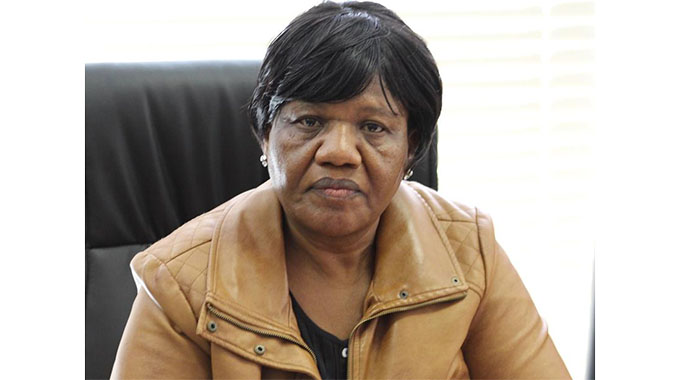EDITORIAL COMMENT : Piggery scheme can transform livelihoods

President Mnangagwa recently launched a piggery scheme under his Presidential Livestock Inputs Support Programme that will see beneficiaries each borrowing two sows and a boar on a free loan.
After the first litter, a beneficiary is expected to pass the pigs to the next approved person.
Essentially, the scheme will play a complementary role to other running livestock schemes covering cattle, goats, sheep, poultry and fisheries — all launched in the recent past.
Pigs are known to produce large litters if they receive proper care and food, which means that the scheme will offer a “quick sustainable pathway to better livelihoods for the communities” as the President aptly put it.
A sow can have two farrowings and produce more than 20 piglets every year, and can be sent to the market at six months, so farmers can generate both revenue and cashflows quickly, while still building their herd to the most viable size.
It is important to note that recent cattle deaths across the country have created a beef deficit that requires to be filled through boosting supplies of other meat products so beneficiaries of the piggery scheme need to be rest assured that they have abundant markets.
The positive thing is that they have secured breeding stock for free, which they could not have managed to do given that breeders are asking for between $650 and $750 for a piglet.
This is a project that will empower various people from the country’s demographic configurations that include women, youths and even the aged.
The country currently has huge numbers of people that are neither formally employed nor creating their own businesses, so many people are struggling to make ends meet. Thus a scheme like this will create employment for many other people along the value chain and outside the circles of the first beneficiaries.
Besides employment creation and income generation, the scheme will also boost food and nutrition security for many people nationally.
One other advantage with pigs is that farmers can use home-grown feeds if they cannot afford concentrates that are sold in shops. They can also divert considerable quantities of household and farm waste to the pigs.
For either option to work effectively they will need to seek advice from experts on the quantities they mix in making their own formulas.
One problem in the past was the difficulty of keeping pigs raised in warmer climates free of disease and parasites. These problems have now largely been overcome, but farmers need to work hand-in-glove with agricultural extension officers and the Department of Veterinary Services (DVS) to ensure they protect the animals from diseases.
Farmers will need to seek advice on bio-security measures needed in pig farming as well so that they do not contribute to spreading diseases. They must work with veterinary and extension officers in their various areas each time they need to do new things that they do not fully understand.
Farmers must remember that meat inspectors will reject pigs and pork if there is disease or parasites.
The bottom line, however, is that beneficiaries must have the discipline to suppress cravings for meat that will see them slaughtering and eating or selling the breeding stock well before they achieve the economic benefits that were expected to be enjoyed in the near future.
It is also crucial for various arms of Government that are involved in agriculture to chip in and make available literature on pig farming in the 16 languages of the country so that farmers understand exactly what they will be doing should they use the handbooks for knowledge.
It is exciting to note that besides outright farmers, agricultural colleges, research institutions, security services farms, women and youths among others are benefiting from the scheme, which raises prospects of professionally run projects with output also rising.
The commercial sow herd is estimated at around 20 000 with a potential of producing approximately 17 000 tonnes of pork annually while the national target for the commercial herd sow is 25 000, which means that there is still lots of room for growth.
Farmers must tap into this opportunity to produce big and sustainable herds of pigs.
Colleges may also get the opportunity to translate theory into practice and produce for big processors and even generate income for new projects outside pork farming.
If production levels keep soaring, then it means the local market will be satiated so the export market will be the next target, which will help the country generate foreign currency through exports.
A replica of the heifer-pass-on scheme, the piggery scheme is meant to empower thousands of Zimbabweans through the productive and organised use of limited resources. It is a programme whose excellence thrives on quality, as the breeding stock is taken from animals whose performance in terms of quality is well-known.
The genes of the piglets donated by Triple C Private Limited were from Europe and developed in South Africa so they can easily adapt to the climatic conditions here.
On the one hand, the programme feeds well into President Mnangagwa’s vision of a middle income economy by 2030 in which all citizens will be living decent lives sustained by high productivity and decent earnings.
It is also critical to note the commitment of the private sector to the successful rolling out of important Government initiated programmes like the piggery scheme, which has enjoyed the buy-in of businesses like Innscor and its pork subsidiary Colcom, which in turn owns Triple C Private Limited.
“Success in agriculture is a result of concerted efforts among all critical players.
“We remain committed to a private sector-led and Government-enabled economic development trajectory as enunciated in the Transitional Stabilisation Programme,” the President observed when he launched the piggery scheme in Harare.











Comments